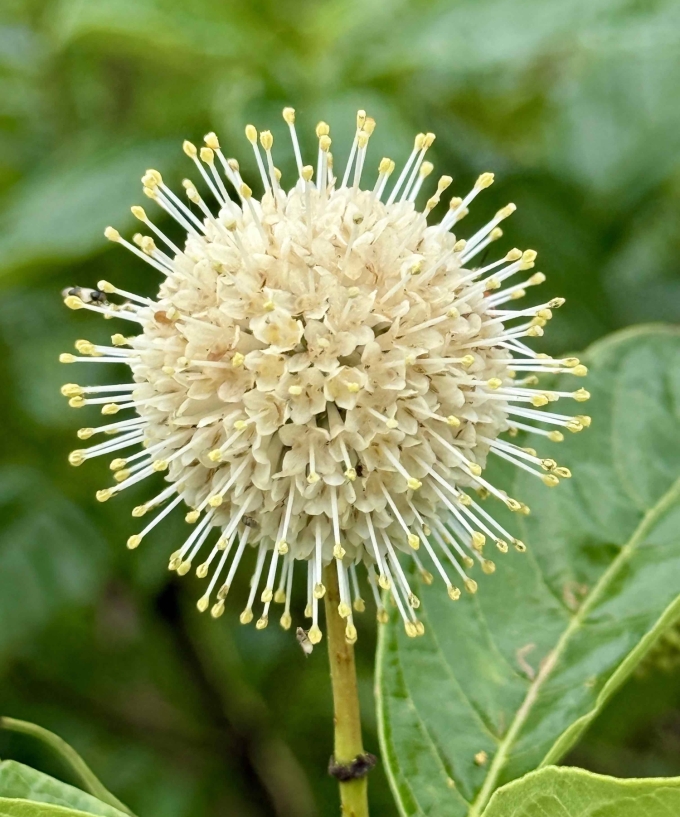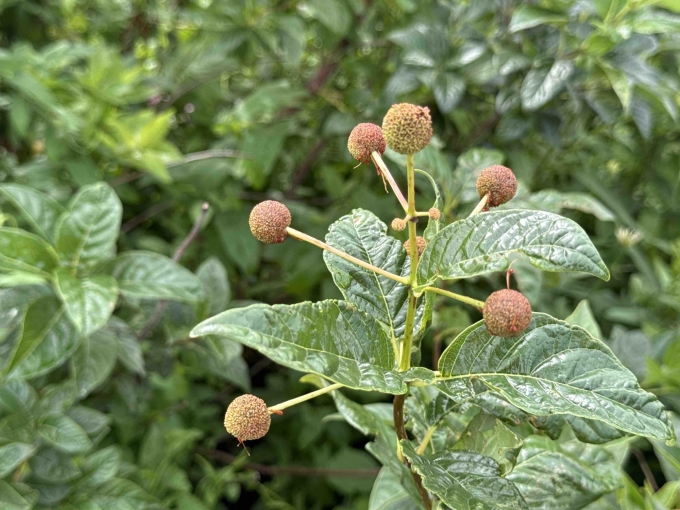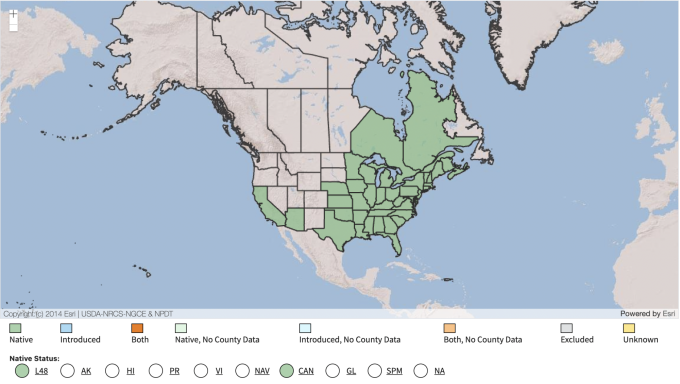Common Name: Buttonbush
Family: Rubiaceae
Plant Type: Deciduous Shrub
Native Range: North America, including Eastern Nebraska
Hardiness Zones: 5–9
Height: 5.0 to 12.0 feet
Spread: 4.0 to 8.0 feet
Bloom Time: June
Bloom Description: Dense, spherical clusters of fragrant white flowers
Sun Exposure: Full sun to part shade
Water Needs: Medium to wet
Soil Preference: Moist, humus-rich; tolerates flooding and shallow standing water
Management Level: Low
Suggested Use: Rain gardens, pond margins, naturalized wet areas
Attracts: Hummingbirds, butterflies, native pollinators
Tolerates: Erosion, wet soils
Notable Features: Unique flower form, winter fruit interest, wildlife value
Nebraska Growing Notes:
Buttonbush is a wetland-adapted native shrub found in moist to saturated habitats across eastern Nebraska. It thrives in rain gardens, along pond edges, and in riparian buffer zones. The showy, globe-shaped white flowers bloom in early summer and are highly attractive to pollinators (including butterflies, bees, and hummingbirds).
This versatile shrub tolerates seasonal flooding and shallow standing water, making it a strong candidate for water retention areas and drainage swales. In fall, the flower heads mature into ornamental seed balls that persist into winter, adding visual interest and providing food for birds.
Landscape Use:
Well-suited for rain gardens, bioswales, wetland restoration, or naturalized plantings near streams and ponds. Its unusual flowers and ability to thrive in challenging moisture conditions make it a standout in habitat gardens and low spots in the landscape.
Caution:
Buttonbush performs poorly in dry soils. Plant in areas with consistent moisture or where water naturally collects. May require occasional pruning to maintain size or shape, especially in smaller landscapes.
Garden Locations:
Bed #7





